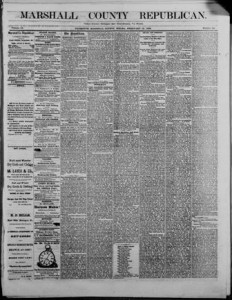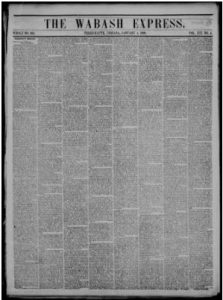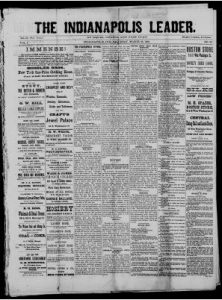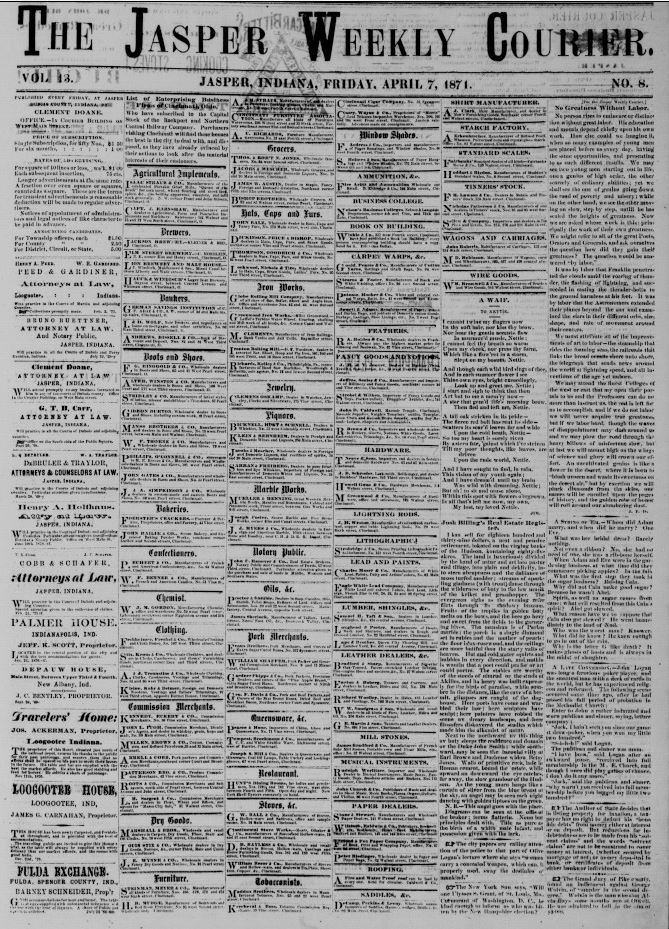
Click on the hyperlinks throughout this essay to access digitized issues of the newspapers.
In March 1852, Richard Corbaley acquired the Plymouth Pilot, situated in an agricultural community in north-central Indiana, and changed the title to the Plymouth Banner. The paper changed ownership five times during the next four and a half years. In 1855 the paper became the Plymouth Weekly Banner. Then, on the eve of the 1856 election, Ignatius Mattingly purchased the paper and changed its name to the Marshall County Republican. While the Banner had aimed to be not “a strictly political paper – but a home newspaper,” the Republican intended to “advocate, zealously and fearlessly” for the Republican Party’s candidates and causes.
Mattingly owned the paper until 1868, and was succeeded by ten other proprietors over the next decade. In February 1878, John W. Siders and Walter L. Piper bought the Marshall County Republican. Although Siders’s partners would change over the years, Siders retained ownership of the newspaper until 1890. Siders shortened its name to the Plymouth Republican in December 1878. He expanded the four-page weekly to eight pages by 1882 and increased circulation from 960 in 1880 to 1,382 in 1890 in the city of 2,570 residents.
In 1890, Siders shared editorial duties with his partner, Edward S. Brooke, before leaving the paper the following year. Brooke established a daily edition in April 1896 called the Plymouth Evening News and continued publishing the Republican as a weekly. Rolla B. Oglesbee owned and operated both papers beginning in April 1897, before selling them to William G. Hendricks the following year. Hendricks combined the Republican and the Evening News into the Plymouth Tribune in 1901. The Tribune reached a peak circulation of 1,800 in 1911. Hendricks sold the paper that year to Samuel E. Boys, owner of the Plymouth Daily Chronicle. Boys combined the Tribune and Chronicle into a single newspaper, which he renamed the Plymouth Republican, and continued issuing daily and weekly editions. In 1922, Boys discontinued the weekly edition, and recalling the newspaper’s first incarnation, re-titled it the Plymouth Daily Pilot. The Daily Pilot operated until Boys merged it with the Plymouth Daily News to form the Plymouth Pilot-News in 1947.




